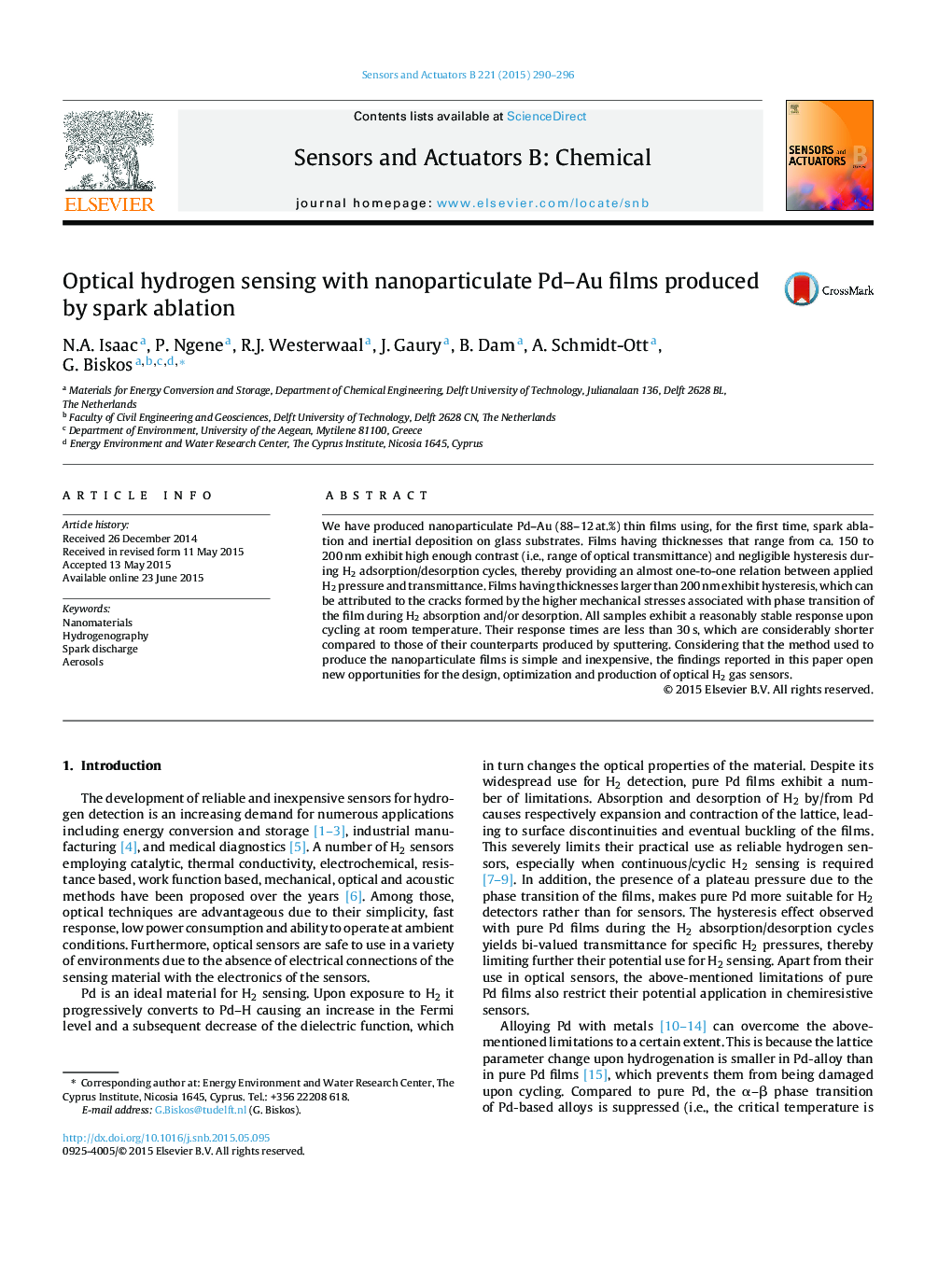| Article ID | Journal | Published Year | Pages | File Type |
|---|---|---|---|---|
| 7145343 | Sensors and Actuators B: Chemical | 2015 | 7 Pages |
Abstract
We have produced nanoparticulate Pd-Au (88-12Â at.%) thin films using, for the first time, spark ablation and inertial deposition on glass substrates. Films having thicknesses that range from ca. 150 to 200Â nm exhibit high enough contrast (i.e., range of optical transmittance) and negligible hysteresis during H2 adsorption/desorption cycles, thereby providing an almost one-to-one relation between applied H2 pressure and transmittance. Films having thicknesses larger than 200Â nm exhibit hysteresis, which can be attributed to the cracks formed by the higher mechanical stresses associated with phase transition of the film during H2 absorption and/or desorption. All samples exhibit a reasonably stable response upon cycling at room temperature. Their response times are less than 30Â s, which are considerably shorter compared to those of their counterparts produced by sputtering. Considering that the method used to produce the nanoparticulate films is simple and inexpensive, the findings reported in this paper open new opportunities for the design, optimization and production of optical H2 gas sensors.
Related Topics
Physical Sciences and Engineering
Chemistry
Analytical Chemistry
Authors
N.A. Isaac, P. Ngene, R.J. Westerwaal, J. Gaury, B. Dam, A. Schmidt-Ott, G. Biskos,
